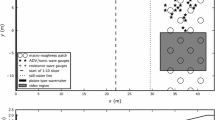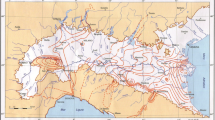Summary
The lowest pass through the Alpine crest, the Brenner Pass, was heavily instrumented with ground-based and air-borne in-situ and remote sensors during the Special Observation Period (SOP) of the Mesoscale Alpine Programme (MAP) in the fall of 1999 to study gap flow. The main objectives were to study the combined effects of changes of terrain height and changes of width in altering the flow characteristics, to investigate the coupling of the gap flow to the flow aloft, and to provide high-density measurements in the along- and cross-gap directions.
Gap flows occurred during one third of the 70-day SOP, a frequency above the long term average. Gap flows took place with and without accompanying cross-barrier flow and with and without a capping inversion. A case study demonstrates the hydraulic jump-like features that occurred in gap flow on 30 October 1999 and illustrates the types of data available for further analyses.
Similar content being viewed by others
Author information
Authors and Affiliations
Rights and permissions
About this article
Cite this article
Mayr, G., Armi, L., Arnold, S. et al. Gap flow measurements during the Mesoscale Alpine Programme. Meteorol Atmos Phys 86, 99–119 (2004). https://doi.org/10.1007/s00703-003-0022-2
Received:
Revised:
Accepted:
Published:
Issue Date:
DOI: https://doi.org/10.1007/s00703-003-0022-2




